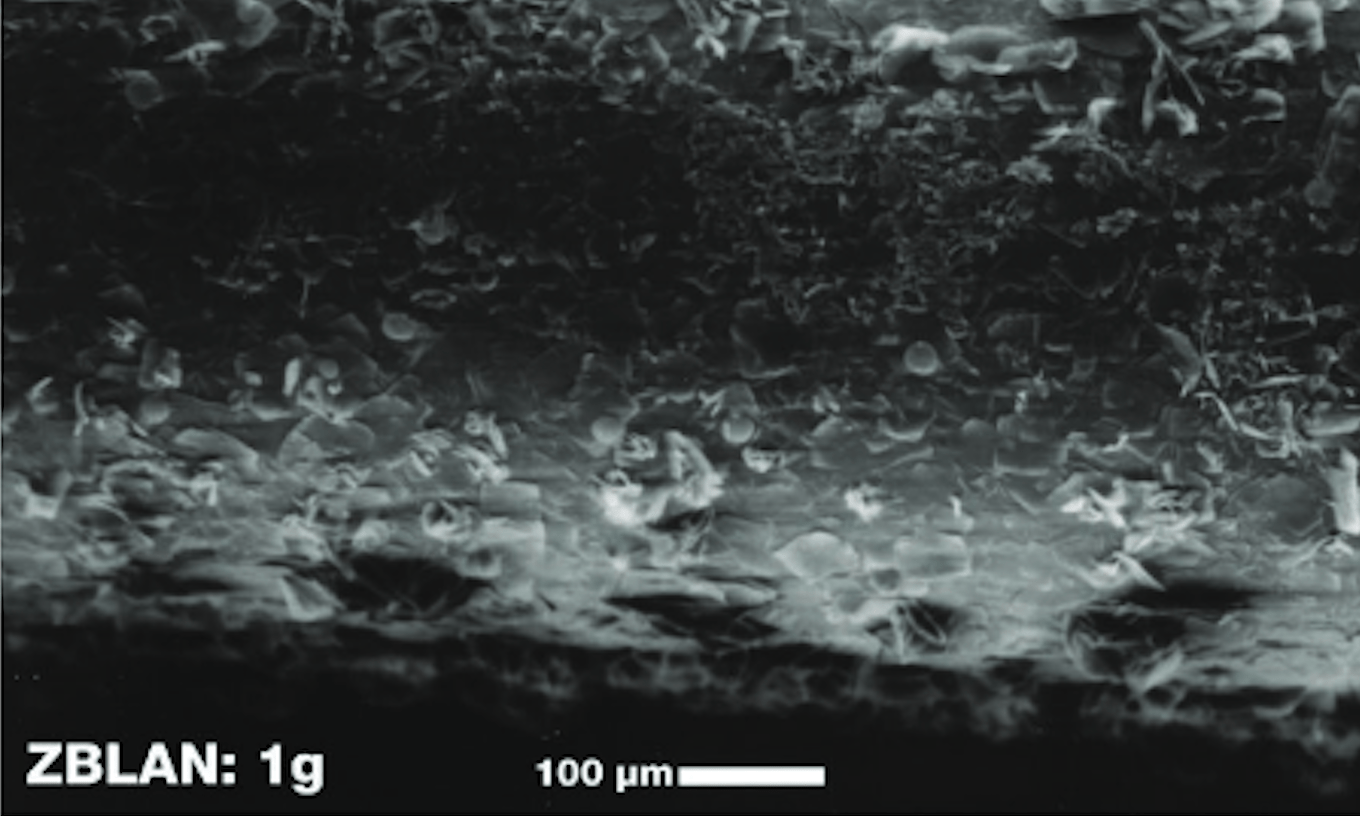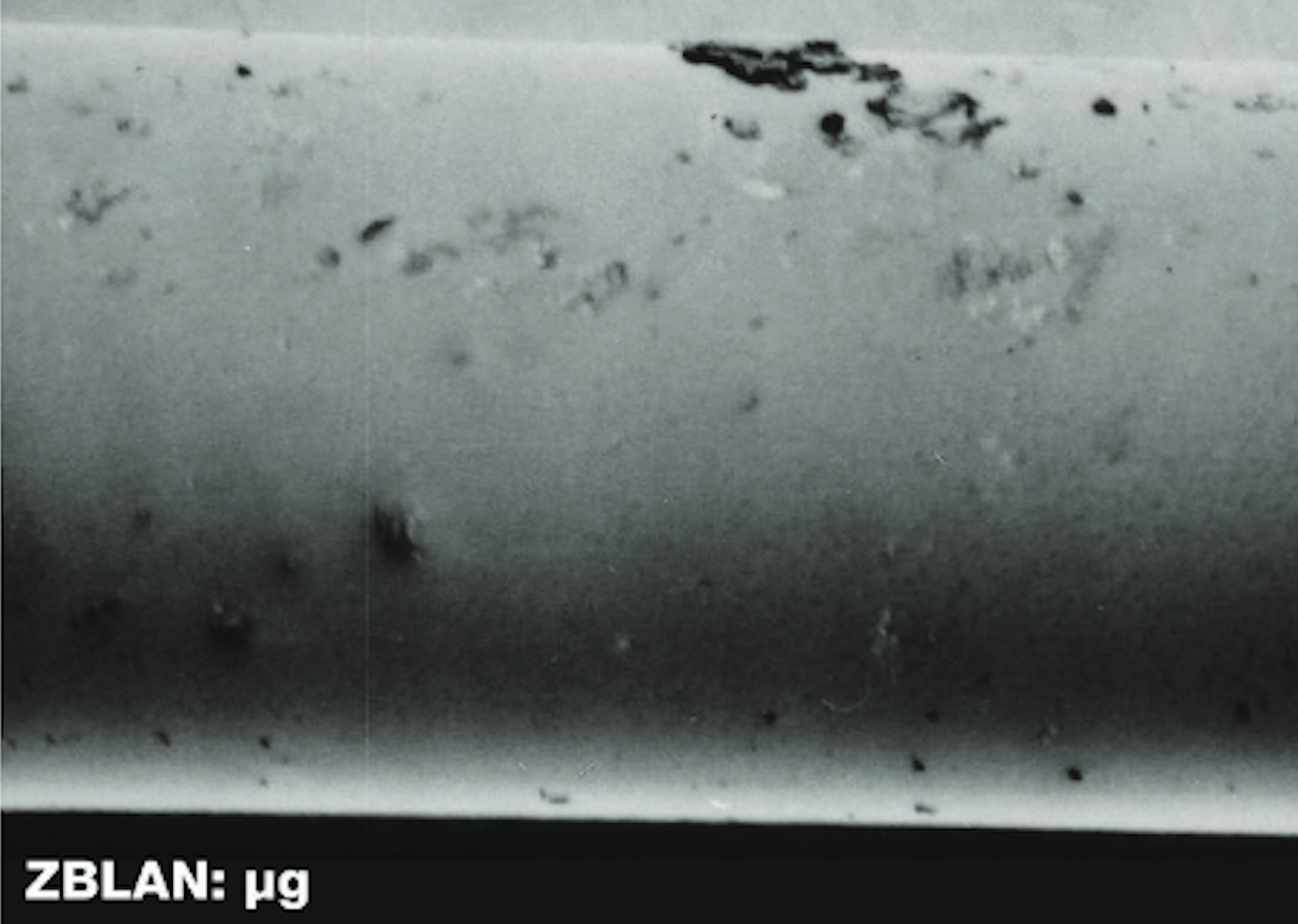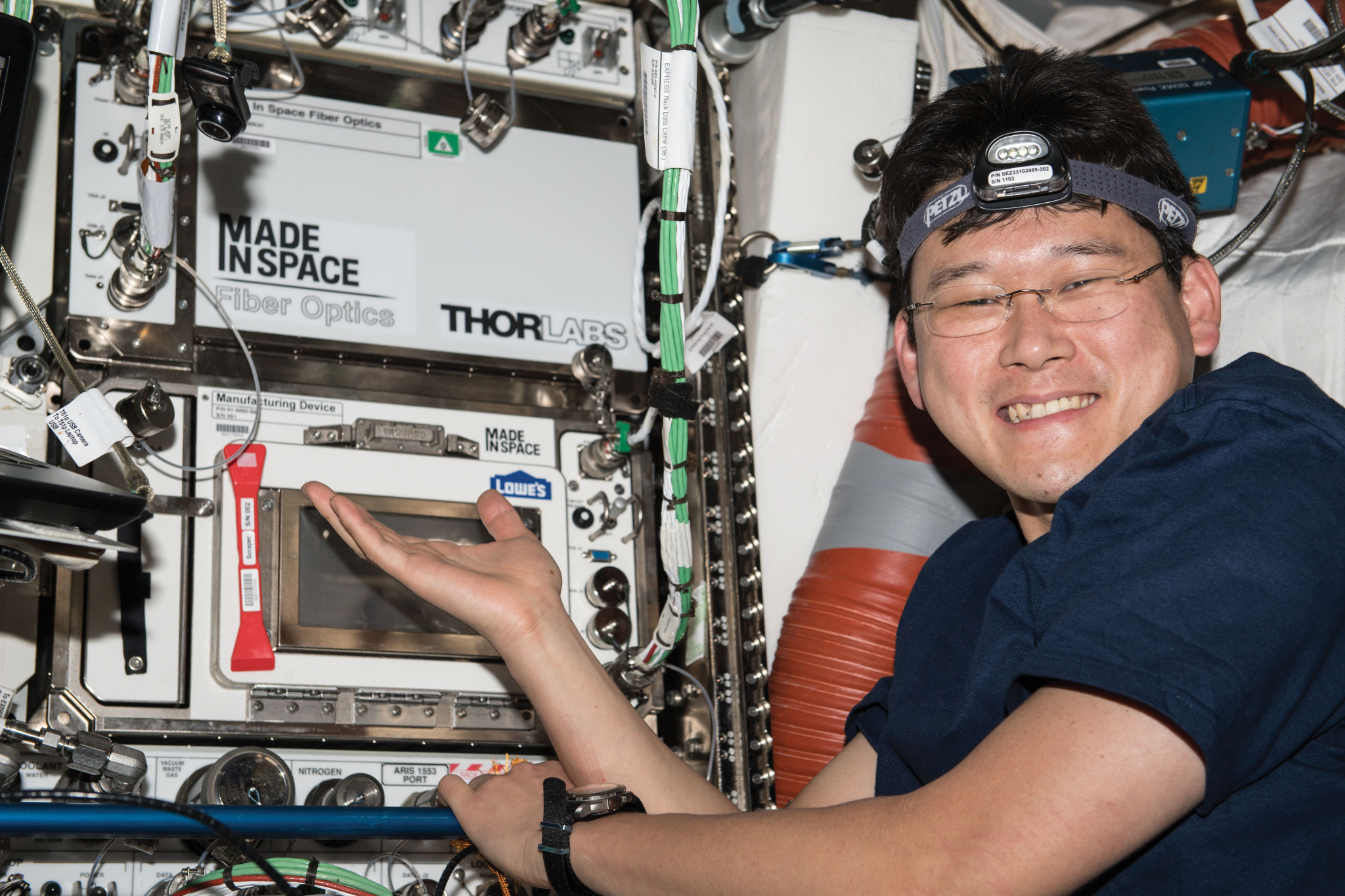Science in Space: March 2024
Optical fibers are used on Earth and in space for applications in medicine, defense, cybersecurity, and telecommunications. Parabolic research showed that optical fibers produced in microgravity can be higher quality than those made in normal gravity, and the International Space Station provides a potential platform for commercial production of these fibers. The Production of Flawless Space Fiber (Flawless Space Fibers-1) investigation is using the space station to demonstrate new manufacturing technology developed by Flawless Photonics to improve the quality and length of optical fiber produced in space.
Preliminary results have been promising. From mid-February to mid-March, the investigation manufactured a total of more than seven miles (11.9 km) of optical fiber. Eight of the runs (called draws) produced more than 2,200 feet (700 meters) of fiber, demonstrating that the results are repeatable. The investigation also drew more than 3,700 feet (1141 meters) in one day, surpassing the prior record of 82 feet (25 meters) for the longest fiber manufactured in space. Seven of the draws exceeded 2,296 feet (700 meters), demonstrating for the first time that commercial lengths of fiber can be produced in space. The space-drawn fibers are set to return to Earth soon for analysis of their quality.
These fibers are made using ZBLAN, a glass alloy made of zirconium, barium, lanthanum, sodium, and aluminum fluorides, each with different densities and crystallization temperatures. Its unique properties allow light to travel through a fiber over a broader range, providing more than ten times the capacity of traditional silica-based fibers and transmitting considerably more data over the same length of fiber. If fibers can be made long enough and of high enough quality, the increased efficiency of ZBLAN could translate into significant energy savings by reducing the need to boost the signal on long-distance transmissions.
However, when ZBLAN is drawn into fibers on the ground, crystals form that scatter signals and make the fiber brittle. Because crystals grow more slowly in microgravity, the approach is to cool drawn fibers before crystals have a chance to form. Microgravity also counters effects of sedimentation, convection, and buoyancy that limit the length and quality of fibers drawn on Earth. Manufacturers use drop towers to manufacture ZBLAN on Earth, but in-space manufacturing provides much more time to draw longer and eventually better fibers.
The Flawless Space Fibers investigation is sponsored by the ISS National Laboratory and involves support from the Luxembourg Space Agency, University of Adelaide in Australia, and NASA’s InSpace Production Applications (InSPA). InSPA advances sustainable, scalable, and profitable in-space manufacturing in low Earth orbit, working with the ISS National Lab to provide companies with access to the space station for demonstrating production of advanced materials and products for terrestrial applications. Flawless Space Fibers has achieved three of four goals for ZBLAN set by InSPA, including achieving 20 meters on a single run, repeating that amount on a separate draw, and scaling up to runs of commercial length. The analysis of fibers after return to ground is needed to determine whether the investigation meets InSPA’s fourth goal, producing fiber of ten times greater quality than on Earth.
Results may help reduce gravity-induced defects in optical glass products developed on Earth and advance in-space manufacturing models. The investigation also opens the door to creating other valuable specialty fibers in space.
NASA conducted early work processing ZBLAN in microgravity through Marshall Space Flight Center in the 1990s and early 2000s. Development of ZBLAN manufacturing on the space station began in 2014.
Other investigations that examined manufacturing ZBLAN optic fibers in microgravity include Optical Fiber Production in Microgravity (Made In Space Fiber Optics), which conducted the first privately funded ZBLAN fiber draw, Fiber Optic Production, and Fiber Optic Production-2 (FOP-2), which first demonstrated repeated production of 20-meter lengths of fiber in microgravity. Another investigation, Fiber Optics Manufacturing in Space (Space Fibers), developed by FOMS Inc, first demonstrated a fully operational space facility for fiber manufacturing.1
These efforts support commercial development of space and low Earth orbit and offer opportunities for development of next-generation technologies in space for applications on Earth.
John Love, ISS Research Planning Integration Scientist
Expedition 70
Search this database of scientific experiments to learn more about those mentioned above.
Citations:
1 Starodubov D, McCormick K, Dellosa M, Erdelyi E, Volfson L. Facility for orbital material processing. Sensors and Systems for Space Applications XI, Orlando, Florida. 2018 May 2; 10641106410T. DOI: 10.1117/12.2305830.


































